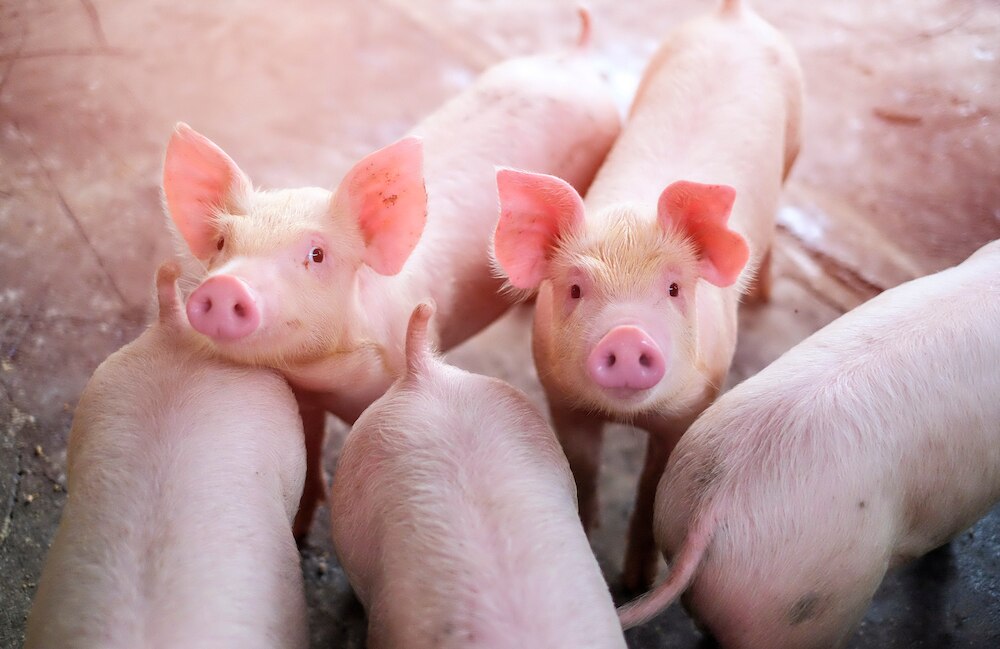Create a free profile to get unlimited access to exclusive videos, sweepstakes, and more!
Bringing pigs back from the dead. Are humans next?
That'll do pig.

From the three little pigs and Wilbur to Porky and Babe, there are a disproportionate number of fictional and semi-anthropomorphic pigs. That might be because they are cute, because they live in relatively close proximity to humans, or because they’re intelligent enough that we can see ourselves in their mud-covered eyes. Whatever the reason, pigs like Babe have gone on adventures from the farmhouse to the city, and now they’re going where few have gone before: to the edge of death and back again.
The more we learn about dying, the more we realize that the boundary between life and death isn’t entirely clear. What was once though of as a binary state — either dead or alive — is now understood to be a gradual process which can, under the right circumstances, be reversed.
In 2019, scientists from the Yale University School of Medicine succeeded in reviving the disembodied brains of pigs using their BrainEx system. The process utilized a solution pumped through the circulatory system to slow down the decay process and restore some functionality.
Given that the brain is the organ most sensitive to oxygen deprivation, it stood to reason that if they could restore activity in the brain, they could do the same thing for other parts of the body as well. Now the same team of researchers have taken the next logical step by restoring circulation and cellular activity in whole-body pigs. The results were published in the journal Nature.
Using BrainEx as a foundation, scientists developed a similar system which they have dubbed OrganEx, designed to deliver a restorative cocktail to the entire body. To test whether or not it would work, pigs taken from a local breeder were sedated, placed on a ventilator, and given shocks to the heart to induce cardiac arrest. Once cessation of heart activity was confirmed, the ventilator was removed. With no heart activity and no respiration, the pigs were dead by just about every definition we typically use, and they remained that way for an hour.
The pigs were then separated into groups. One group was a control which received no additional treatment. A second group was placed on an ECMO machine, a device which can temporarily take the place of the heart and lungs to deliver oxygenated blood, which is sometimes used during surgeries or when maintaining organs destined for transplantation. The final group was hooked up to the OrganEx system, which pumps a blood substitute containing animal blood and 13 additional compounds which prevent clotting and suppress immune reactions.
After an hour had elapsed, the ventilator was restarted along with the ECMO and OrganEx systems. The pigs were also given a course of anesthesia and neuronal blockers. Researchers made clear that the results did not indicate a complete resurrection, but they were incredibly promising.
Six hours later, the results were clear. The introduction of the OrganEx system slowed down decomposition and restarted circulation throughout the body. As expected, the tissue activity was significantly better than in animals who received no restorative treatment but, notably, it was also better than those animals who were hooked up to an ECMO machine. Moreover, researchers detected electrical activity and contractions in the heart. Activity was also detected in other organs, including the liver, and there was some evidence that metabolism had started up again.
Importantly, researchers did not detect any organized brain activity but it’s unclear if that was a failing of the OrganEx system or a result of the anesthesia and neuronal blockers. In truth, that’s probably for the best. Until such time as scientists can complete more rigorous ethical analyses, it’s important to avoid performing these sorts of experiments on conscious animals.
In the meantime, the implications of OrganEx as it relates to human longevity are manifold. The obvious application is as an improved resuscitation method, perhaps taking the place of ECMO machines. Provided these results hold to the same standard in humans as they do in pigs, it could offer a more effective treatment for restoring activity to the body than is available from existing methods. Scientists noted that it could be as important to increased longevity as the introduction of CPR. It also has the potential to more effectively preserve organs being transported for transplantation, ensuring they arrive at the recipient having degraded as little as possible.
This and other research surrounding the question of death have made clear that when you’re gone, you’re not really gone, at least not right away. And the window of opportunity to treat someone and potentially bring them back to the land of the living is widening.
To that, we have just one thing to say: that’ll do pig. That’ll do.


























